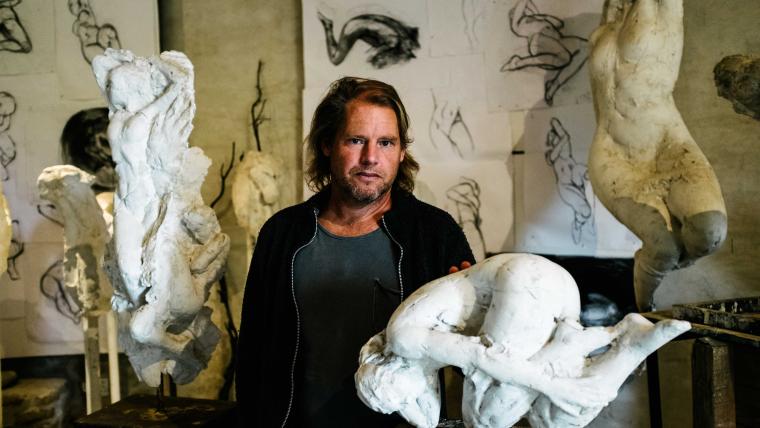
Fantastic beasts. This is where to find them
Dylan Lewis’ sculptures have been displayed around the world. His works have found their way into the collections of prominent figures such as the late President Nelson Mandela and several members of the British royal family. But it is at home in South Africa that his greatest treasure lies. The Dylan Lewis Sculpture Garden in Stellenbosch is where wild beauty meets fine art. Views of the mountain slopes are interrupted by otherworldly figures. From afar, they appear seamless. Bronze effigies glide and dance through the landscape. Up close, the imposing hordes of rocklike sculptures hint at the primitive, raw nature within us as animal and human lifeforms collide.
Despite coming from a family of artists, Lewis failed Fine Art in his first year of studying. He worked as a taxidermist at the Rondevlei Nature Reserve and picked up part-time painting classes years later, but it was only when his father passed away in 1988 that he began experimenting with what was to become his primary medium. The late sculptor’s success with unusual birds gave his son the confidence to build his own creatures. Taxidermy developed his knowledge of the animal form, while childhood excursions and jobs at nature reserves influenced his choice of theme.
Lewis’ works are made with a deliberate imperfection. The steel structures covered in clay and cast in bronze retain his handprints, visible marks of the creative process. They are sought after by collectors across the globe, a demand Lewis is using to benefit the beasts that have inspired him. Of his multiple solo features at the prestigious auction house, Christie’s, 10% of the proceeds have been donated to the World Wildlife Fund.
Lewis’ current focus is his garden, where his sculptures live on seven hectares of land that includes a four-kilometre walkway of pathways, streams and perennial indigenous fynbos. Initially predominantly feline, Lewis’ latest figures take on human forms, their features blurring the lines between predator and prey. Masked faces conceal identity, wings rise to the sky and talons claw at the air around them. The bronze inhabitants of the garden are a reminder that we are of the wild and the wild is within us. In urban spaces, we stand to lose this connection. But this isn’t set in stone. Lewis’ sculpture garden encourages us to acknowledge the intrinsic link between ourselves and other animals while preserving the natural beauty of this country.




















Please sign in to leave a comment